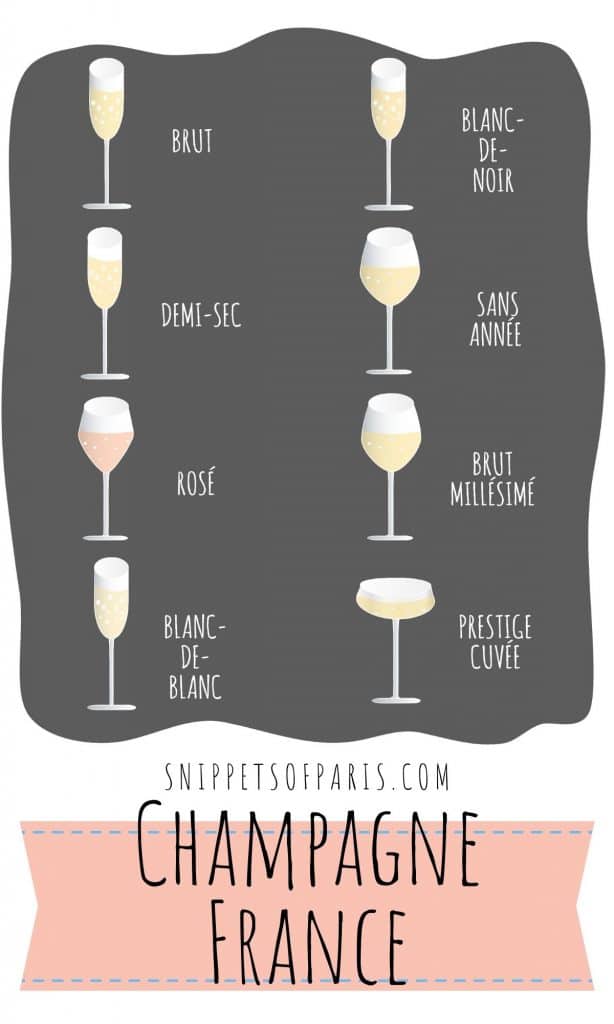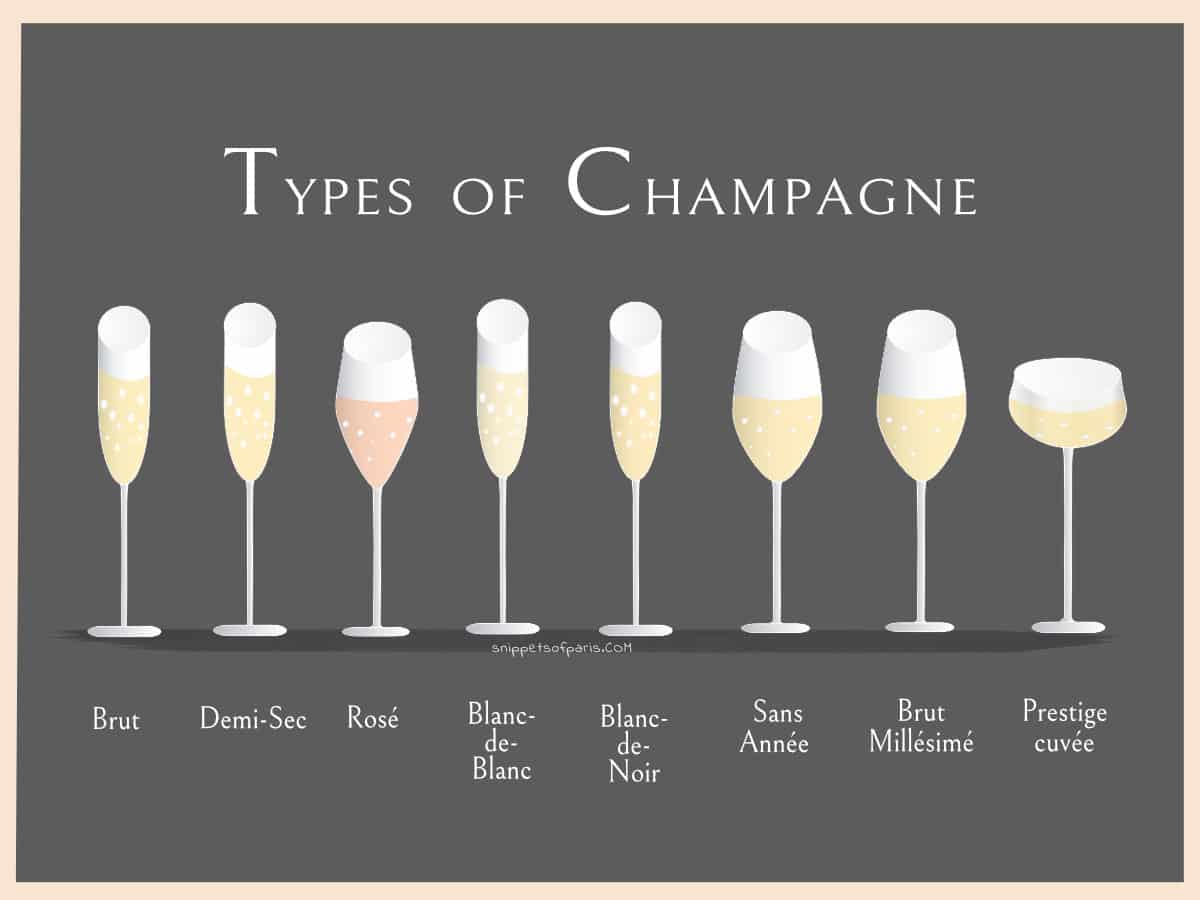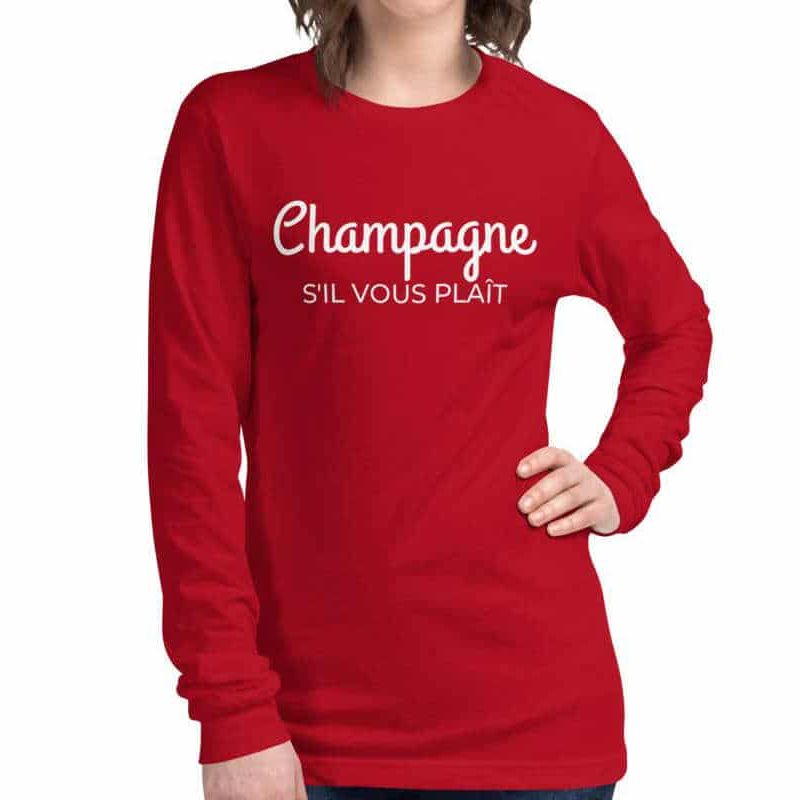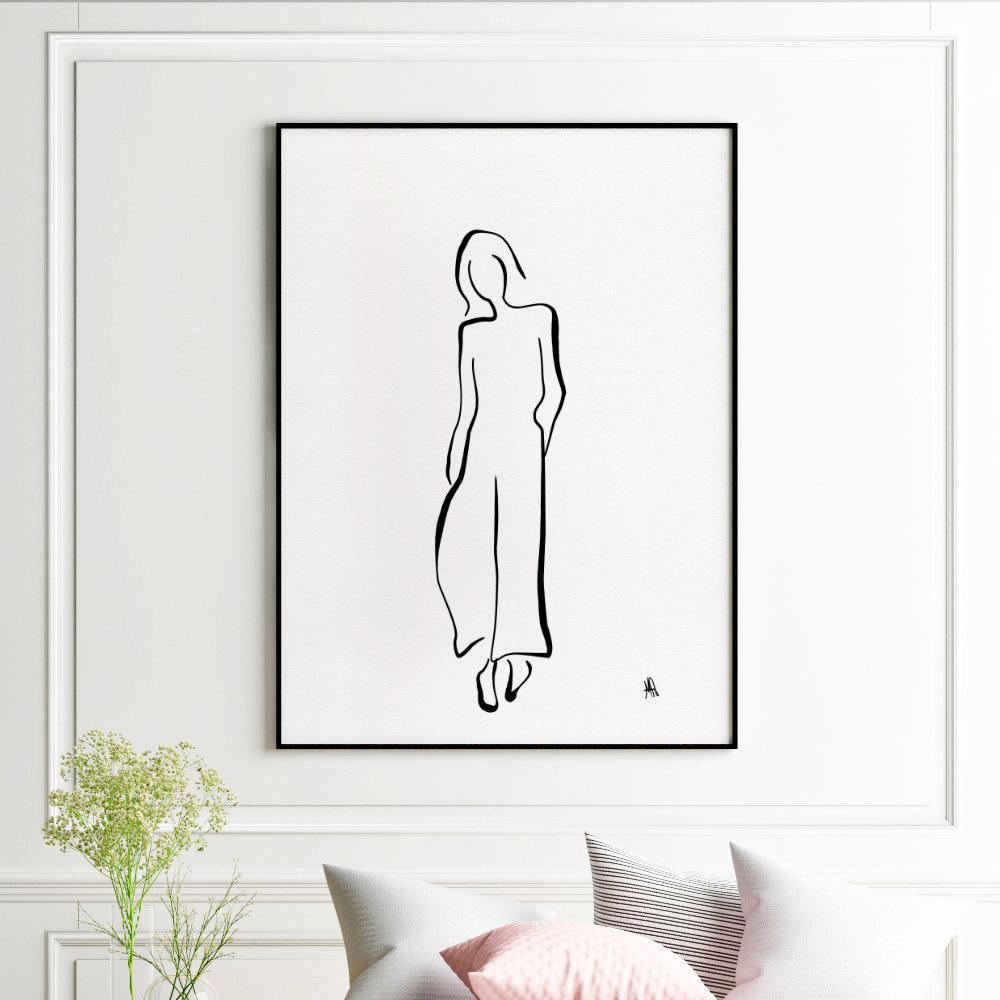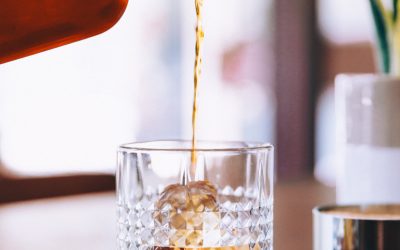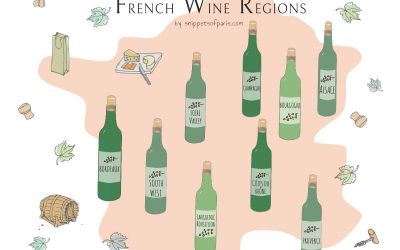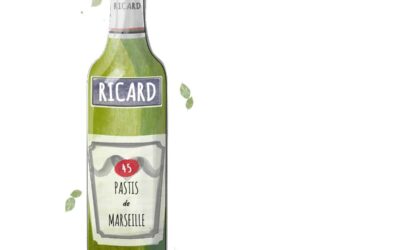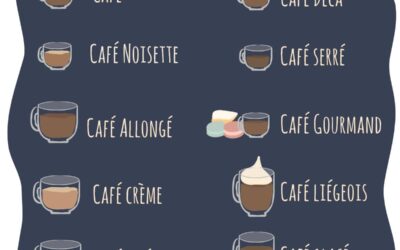When you think of luxury and prestige, it is usually accompanied by a glass of Champagne. The most famous of French wines (yes, it counts as a wine, of the sparkling variety), has many pretenders who try to emulate its exclusive status.
But a bottle of champagne can only come from France, and the best French champagnes are considered the epitome of luxury. With price tags to match.
And they don’t all have the same taste. Types of Champagnes are classified based on levels of sweetness as well as the grapes that they are made with.
It doesn’t need to be New Year’s eve to indulge in a bit of fizz. Having lived in France for the past 10+ years, I should note that it makes an excellent apéritif as well, there is no need to wait once a year!
Other countries may have their sparkling wines and proseccos, but in France and around the world, there is no denying that Champagne is the Grand Master.
So before you spend any more money, let’s find out exactly the different types of champagne and what we are drinking, shall we?
What is Champagne?
The word “champagne” is used to designate specific sparkling wines from the region of Champagne in France. The wine is fermented under seal directly in the bottle, rather than in a barrel, which results in air bubbles and becomes what is generally known as “sparkling wine”.
Sparkling wines have been produced in France as early as the days of the Roman Empire. But the name “Champagne” became famous in France and around the world due to 2 men.
The first was a monk named Dom Perignon in the 17th-century in the outskirts of Reims, who came up with the idea of matching grapes together to come up with particular notes (rather than throwing random grapes together). He also used thicker bottles which helped prevent the bottles from exploding during transport.
This was key to getting the name “champagne” known around the world, as it could now be exported. The 2nd man was his successor in the 18th-century, Dom Grossard, who proclaimed Dom Perignon as the “inventor of Champagne” to augment the prestige and the history of their church and of their sparkling wine.
Champagne has to be to wine what haute couture is to fashion.
Famous French Wine Quote
This clever bit of marketing made it stand out from other older sparkling wines in Limoux and other parts of France.
Today the name Champagne is officially protected in France and through international treaties with an “AOC – appellation d’origine contrôlée“.
☞ READ MORE: Visiting Reims: The Capital of Champagne
The Production
i) The Grapes used
A Champagne is an “assemblage” of different wines. So the quality depends not only on the grapes but also on the Cellar Master. Like a composer writing music, the cellar master puts the different notes of grapes together to create a scintillating blend.
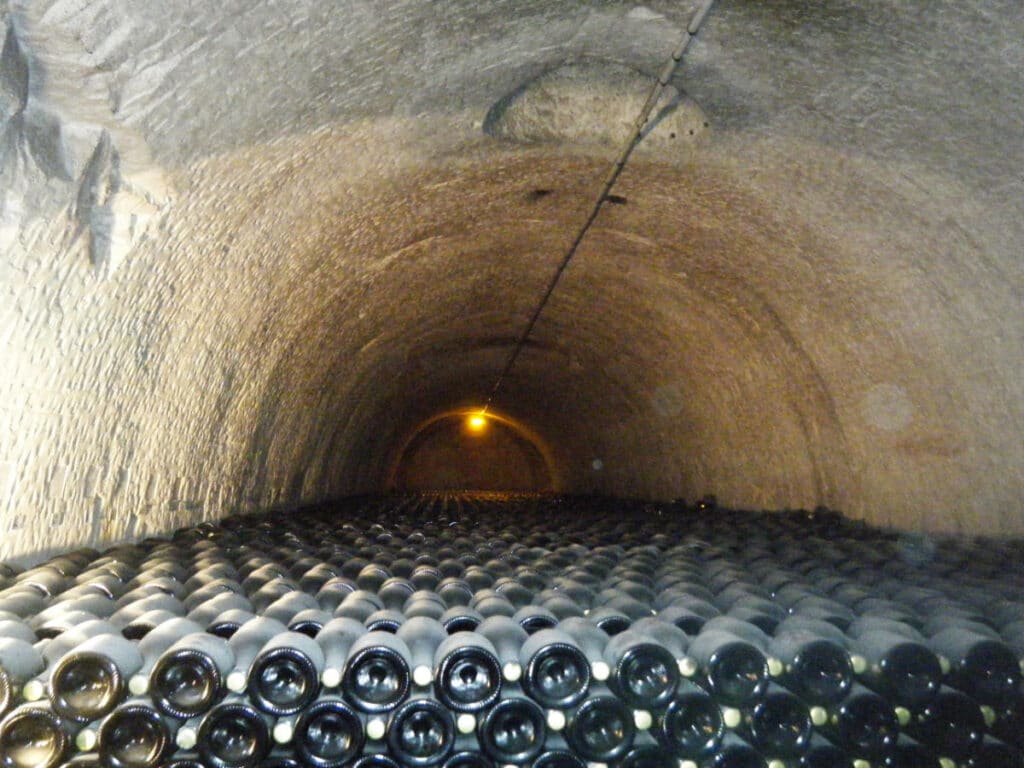
The main grapes involved in champagne production are:
- Chardonnay (green grape)
- Pinot Noir (red grape)
- Pinot Meunier (red grape)
To a certain extent, they may also mix in Pinot Gris and Pinot Blanc grapes. Although the ratios vary, most blended Champagnes use 2/3 red and 1/3 Chardonnay mixes.
ii) What is the difference between champagne and wine?
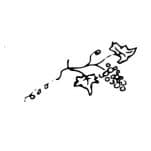
Champagne is a type of wine, specifically a sparkling wine. However, not all sparkling wines are champagnes as it is a protected trademark for vines grown in the Champagne region of France.
All champagnes and sparkling wines undergo two fermentations, while non-sparkling white and red wines only undergo one fermentation.
iii) Why is champagne white, if the grapes are red?
Even though the grapes are mostly red, the champagne is white. This is because the pigment for the colour is all contained in the skin of the grape. When the grapes are pressed at a champagne harvest, the juice is squeezed quickly from the grapes, so that the colour of the skins cannot taint the juice.
The juice is fermented, converting the natural sugar in the grapes into alcohol while the resultant carbon dioxide is allowed to escape. This produces the base wine. After primary fermentation, blending (assemblage in Champagne) and bottling with yeast and a small amount of sugar, a second alcoholic fermentation occurs in the bottle, adding the bubbles.
This is called the “méthode champenoise” or traditional method of making champagne, and is protected by laws in the European Union. Champagne must age at least 15 months, up to 3 years for a vintage (millesime).
iv) What are Champagne prices are based on?
Each champagne house and cellar master will his secret formula based on the structure, fruitiness, body, and complexity of the grapes. The best cuvees offer a harmonious combination of these characteristics while ensuring an appropriate balance of aroma, delicacy and freshness.
With so much dependence on the cellar master’s skill, it is no wonder that a classification system was needed to give connaisseurs an idea of what they should expect.
So the factors to look at when picking a bottle of champagne are:
- the cru prestige classification
- the type of champagne
- the sweetness level
- the vintage
The Prestige Classification by Cru
Depending on the variable of soil and climate, certain vineyards in the Champagne region are considered to be more favorable to champagne production (assuming that they are using the officially sanctioned production process!)
These designations are based on the location of the villages that the grapes come from:
- Grand cru – the most prestigious designation and most expensive
- Premier cru – 1st cru
- Deuxième cru – 2nd cru
- Troisième cru – 3rd cru
- Quatrième cru – 4th cru
- Cinquième cru – 5th cru
As you can imagine, the prices for a Grand cru are significantly higher than for the lower designations.
The Types of Champagne and Sweetness Levels
Even after the “cru” designation, not all champagne is created equal. Certain Cellar Masters and Châteaux specialize in certain flavors and are consistently better than others. And then there is the matter of sweetness.
| Type of Champagne | Sweetness Level |
|---|---|
| Brut Nature | No sugar |
| Extra Brut | Less than 6g per litre |
| Brut | Between 6-12g per litre |
| Extra Dry | Between 12-17g per litre |
| Dry (Sec) | Between 17-32g per litre |
| Demi-Sec | Between 32-50g per litre |
| Doux | More than 50g per litre |
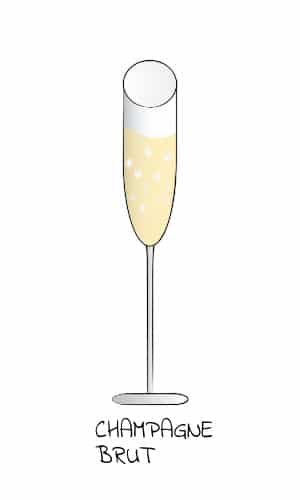
1. Champagne Brut
Drinking a glass of champagne brut in a flute glass, this is champagne we are used to. The Champagne Brut is the most common type that is sold, as authorized under the AOP/AOC standard.
The best champagne bruts include:
- Veuve Clicquot Yellow Label Brut Champagne
- Bollinger Brut Champagne
- Pol Roger Réserve Brut Champagne NV – Magnum
“Brut” means “gross” or more precisely “pure” in this context. In champagne terms, it means that there is very little sugar added into the wine during the fermenting process.
A Champagne Brut is typically aged at least 1.5 years. You can buy a Champagne Brut Gift set here.
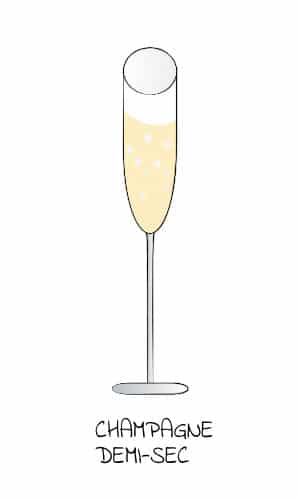
2. Champagne Demi-Sec
A Champagne Demi-Sec (“half-dry”) is a champagne with a higher dosage of sugar in it, compared to a Champagne Brut.
The best champagne demi-secs include:
It is usually recommended that this type of champagne be served with dessert. You can buy a bottle of Champagne Demi-Sec here.

3. Champagne Rosé
Since champagne is an assemblage of wines, Champagne Rosé includes a small amount of red wine (usually Pinot Noir or Pinot Meunier) to give it a light pink color.
Best Champange Rosés include:
The amount of red wine used will influence how pink the champagne is, ranging from light pink to a darker pinkish-orange.
The champagne rosé is often served in a tulip glass since it allows for the fruity aromas of the rosé to develop. Champagne Rosés come in different sweetness levels, so you will have to see on the bottle if it is brut, sec or doux. You can buy a bottle of Champagne Rosé here.
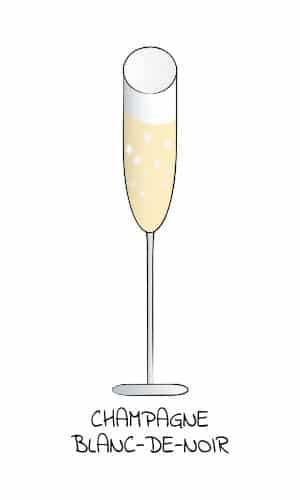
4. Champagne Blanc de Noir
Champagnes that are made exclusively from red grapes are called Champagne Blanc de Noir (“white of black”).
The best Champagne blanc de noirs include:
The grapes used are the same Pinot Noir or Pinot Meunier grape varieties as in the champagne rosé, but the skin is taken off before being pressed so that it doesn’t color the champagne. You can buy a bottle of Champagne Blanc de Noir here.
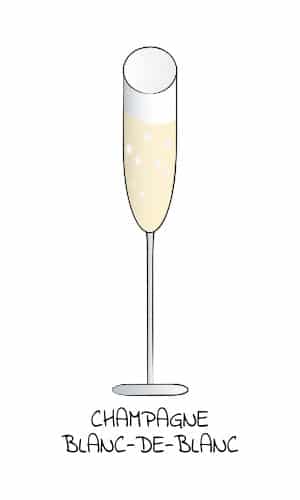
5. Champagne Blanc de Blanc
Champagnes that are made exclusively from white grapes are called Champagne Blanc de Blanc (“white of white”). It is usually made from Chardonnay grapes.
Best Champagne Blanc de Blancs include:
- Taittinger Comtes Grand Cru Blanc de Blancs
- Louis Roederer Blanc de Blancs vintage champagne
- Ruinart Blanc De Blancs Second Skin
The blanc de blancs champagne tend to have airy notes of white flowers (acacia, elderflower) with a tang of freshness. You can buy a bottle of Champagne Blanc de Blanc here.
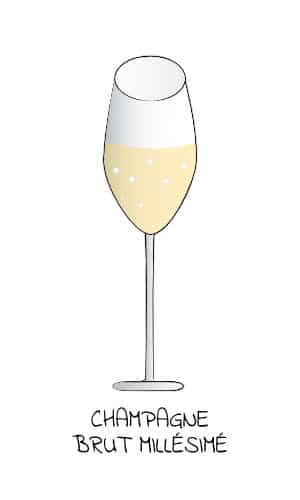
6. Champagne Brut Millésimé
Another exclusive variety of champagne is the Champagne Brut Millésimé, which means that the grapes used were all from the same harvest. This becomes in case in years when the harvest was particularly exceptional, so a millésime is declared.
Best champagne millésimés include:
A Champagne Brut Millésimé is typically aged at least 3 years and will include the year of production on the label (unlike other champagnes).
Champagnes like the Champagne Millésimé are usually served in a tulip glass, since the wide point of the glass develops the aroma and the narrow top keeps them from escaping. You can buy a bottle of Champagne Millésimé here.
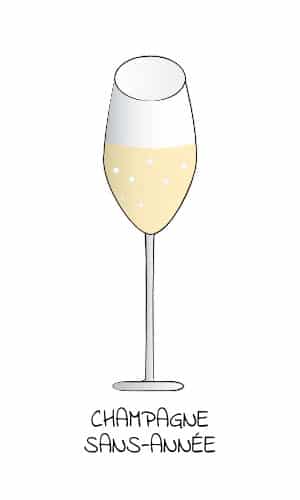
7. Champagne Sans Année
A Champagne Sans Année literally translates to “champagne without a year”. It is a vintage champagne that has been aged for several years and is very good.
While the Champagne Brut Millésimé has the grapes harvested from the same year, the Champagne Sans Année has grapes from different years. Given the capriciousness of climate, this is done so that the particular champagne becomes a signature of the champagne house and has a consistent taste year over year.
The Best vintage champagnes include:
The Cellar Masters of the most prestigious champagne houses will combine many different vintages from a “bank” of reserve wines from previous years to develop these vintage champagnes and keep the taste consistent. (Keeping the taste consistent is actually quite difficult.)
Since these are signature champagnes, the taste is usually more complex and long-lasting. You can buy a Champagne variety gift set here.
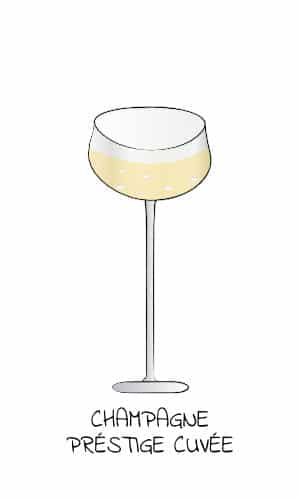
8. Champagne Préstige Cuvée
And finally one of the most exclusives ones: Champagne Préstige Cuvée. It is the best of the best and “the crown jewel” made from the richest crop of grapes in the vineyard.
The best champagne cuvées include:
- Krug grande cuvée champagne
- Bollinger Special Cuvée champagne
- Laurent-Perrier Cuvée Alexandra rosé champagne
At least 75% Blanc de Noir grapes and the bottle is a true demonstration of the savoir-faire of that Champagne house. A Champagne Préstige Cuvée is typically aged at least 5 years, if not more.
Now, the wide glass coupe of champagne as shown above is actually terrible for champagne, because it lets the bubbles escape too easily.
Nevertheless, this is the old traditional glass of champagne that luxury establishments often use to give that air of “je ne sais quoi“. You can buy a bottle of Champagne Prestige Cuvée here.
The Champagne Alternative: What is Crémant?
From the luxury to the budget variety: Champagne connaisseurs may sniff their nose at crémant being on the same list as champagne, but there is a case to be made for trying a crémant. If you like bubbles, but you don’t have the budget for champagne, you can try a crémant.
The designation “Champagne” is protected for grapes produced in the Champagne region of France, but the same traditional method of making champagne is used in several other regions of France to make crémant. These days, French brasseries claiming to serve a Kir Royale with champagne, are likely actually serving a crémant.
As the production process using the same “méthode champenoise”, crémants have their own protected AOC/AOP designations in Alsace, Bordeaux, Loire, Jura, etc. So while crémant may not have the same prestige as champagne, it will certainly make your wallet happier. You can buy a crémant de Loire here.
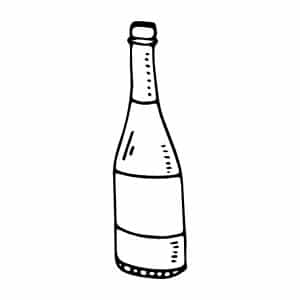
Beyond sparkling wine crémants across France, there are other sparkling wines like:
- Blanquette de Limoux from France
- Prosecco from Italy
- Lambrusco from Italy
- Cava from Spain
- Other sparkling wines from U.S., South Africa, Austria, and Australia and even U.K.
☞ READ MORE: Easy Guide to the French Wines
What is the difference between champagne and wine?

Champagne is a type of wine, specifically a sparkling wine. However, not all sparkling wines are champagnes as it is a protected trademark for vines grown in the Champagne region of France.
All champagnes and sparkling wines undergo two fermentations, while non-sparkling white and red wines only undergo one fermentation.
What is the alcoholic content in champagne?
The percentage of alcohol in champagne is approximately 12%, compared to around 11% for white wine, 12.5% for red wine and 14% for dessert wine. Beer is around 4-6%.
What occasions can you drink champagne?
In France, champagne is not just reserved for New Year’s eve. It can be served for an apéro cocktail, at a dinner party, along with dessert at Christmas, etc.
It also pairs well with starter dishes like escargot, scallops, or oysters, and so are regularly served on those occasions.
Where should you store champagne?
Champagne should be stored on its side in a dark, cool, and dry environment, like a basement or a “cave” (which is a large storage lockers that French people have in their apartment buildings or houses). The ideal temperature of storage is 45°F-50°F ( 7°C to 10°C).
Placing the bottle upright may result in the cork drying out, which is why it is usually placed on its side.
When should you put champagne in the fridge?
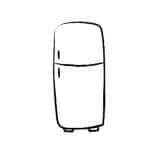
Champagne should be placed in the fridge no more than 3-4 days before drinking. This is because the fridge changes its properties, with bubbles losing their pop, and the flavors becoming less intense.
A vintage champagne will hold its properties longer, but you don’t want to risk that great bottle of champagne!
How do you store an open bottle of champagne?
If you are not going to finish that bottle of champagne, pop an airtight champagne stopper on the bottle as soon as you finish pouring to keep the bubbles in as long as possible.
The bottle should be placed back in the fridge, where it should retain its bubbles and flavors for around 3-4 days.
What cheeses pair well with it?
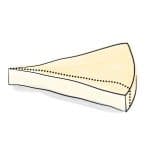
You may not necessarily think of pairing champagne with cheese, but in France, champagne is regularly indulged with a cheese plate for an apéro.
It easily goes with many cheeses, one favorite pairing is with soft cheeses like brie. You can read more about French cheese and wine pairings here.
Champagne region in France
The city of Reims, makes a wonderful base for visiting the vineyards around the Champagne region. All the large champagne houses offer visits of their production house as well as champagne tastings, and the city itself is lively and beautiful in its architecture.

It is also close enough that you can visit the champagne vineyards as a day trip from Paris. You can find out more tours and tour companies here.

So now you know your champagne! The different designations, appellations, and levels of prestige will be marked on the bottle. You can learn more about how to read the French labels on bottles of wine and champagne here.
And now to celebrate, feel free to open a bottle of bubbly and tickle your tastebuds 😉 Santé and cheers!
